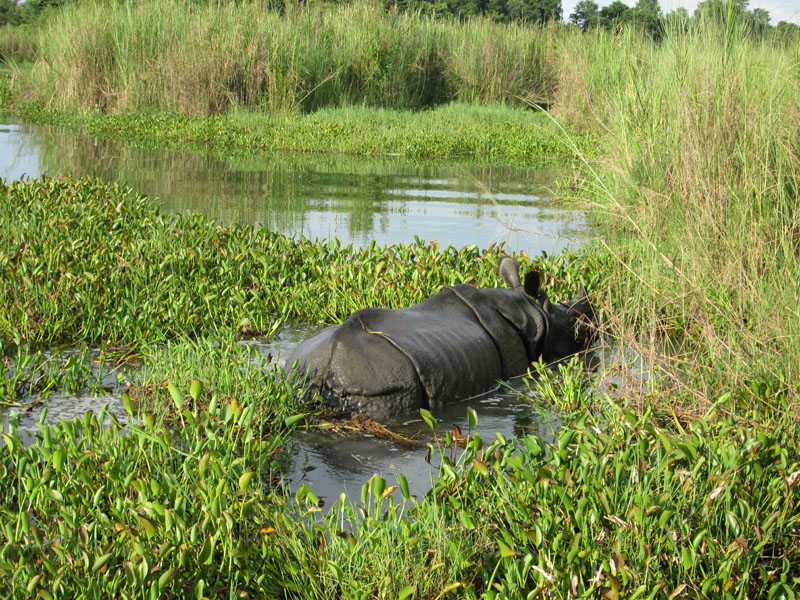CNP marks second year of zero poaching
Chitwan, May 3
Chitwan National Park marked the second consecutive year of zero poaching this year.
The national park’s success has been attributed to the introduction of modern scientific security strategies. Since May 2, 2014, no wild animal, including the one-horned rhino and tiger, has been poached in the park till date.
The last rhino was killed at 12:00am on May 2, 2014.
In 2001, as many as 37 one-horned rhinos were poached and 32 rhinos were poached the following year. Data showed rhino poaching at an all time high during the Maoist insurgency.
In 1984, security concerns related Chitwan National Park — listed in the World Heritage Site — were raised by the international community as wild animals were being killed at an alarming rate.
At present, park staffers, army personnel and Nepal Police, along with others, have been providing security to the park and its animals.
Chief Preservation Officer at the park Ram Chandra Kandel said support from all sides had helped the park authority to break the network of animal smugglers.
As many as 200 persons have been arrested for their involvement in poaching the one-horned rhino in the last seven years.
Likewise, 13 and 140 persons were held for tiger poaching and the poaching of other animals during the same period.
According to Kandel, the park is protected with four layers of security in order to meet the target of zero poaching.
The national park spreads across Chitwan, Nawalparasi, Makawanpur and Parsa districts.
Established in 1972, the park occupies an area of 932 kilometres. Since the park covers a large area, deployment of security is a challenging task.
Kandel attributed the success of the second consecutive year of zero poaching to regular patrolling and special operations.
The special operations include sweeping and camping operation, installing traps, patrolling and air patrolling, among others. “We have used trained dogs in addition to unmanned aircraft and smart patrolling,” Kandel added.
Security check posts have been expanded around the national park in the post-insurgency period. The park has as many as 55 permanent check posts, 31 operation posts and 38 night operation posts.
As many as 21 mid-tier users’ committees and one sub-committee have been formed in and around the park to protect the area.






